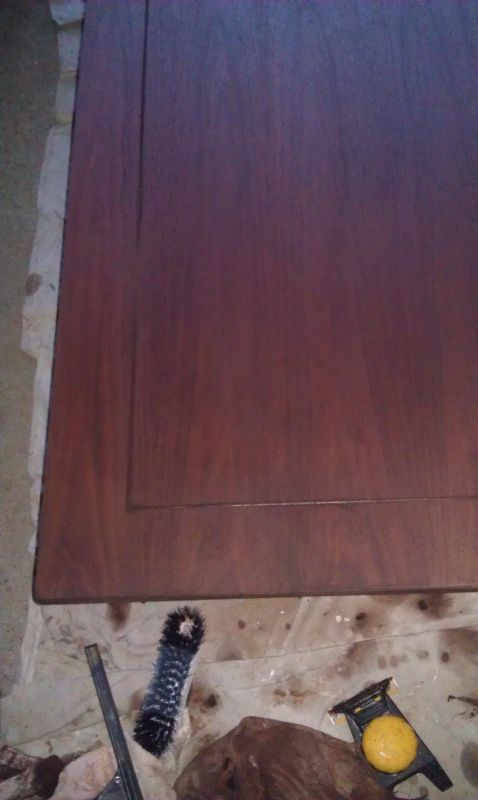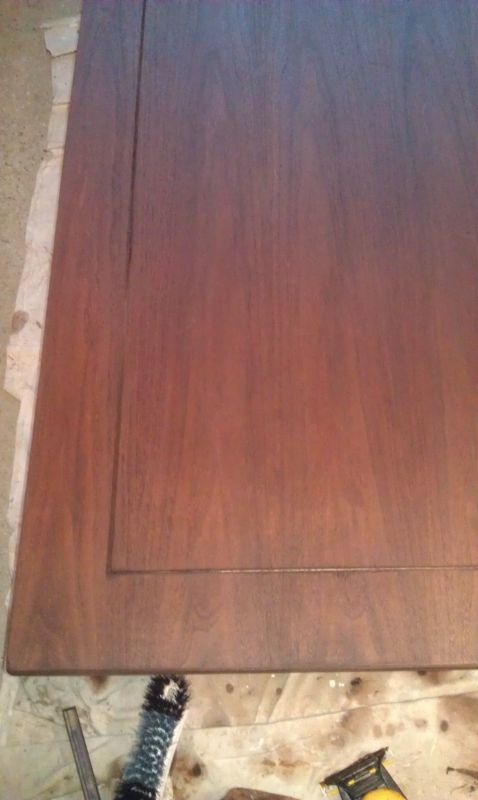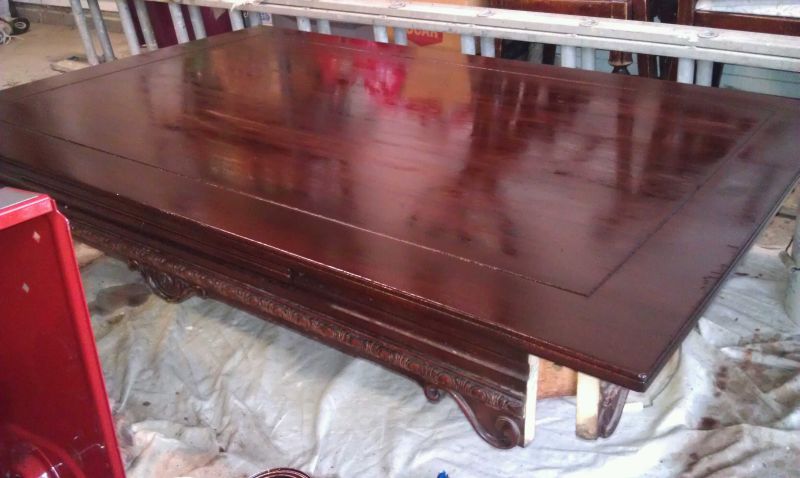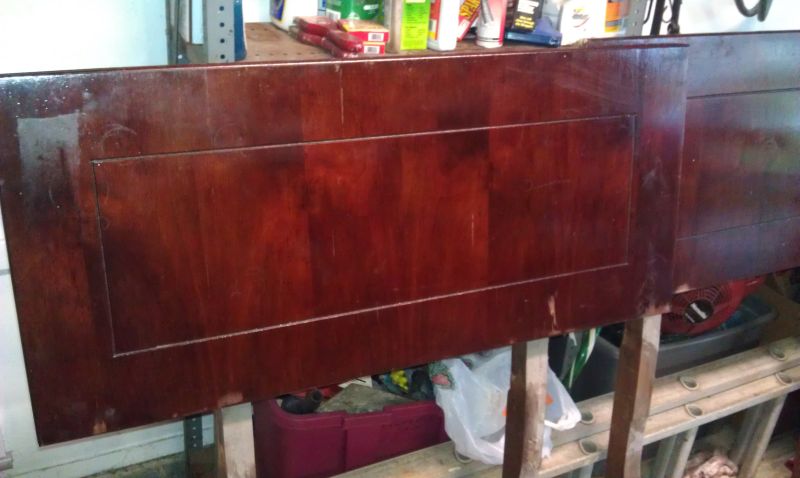Question
I'm deciding what stain to use on this beautiful table. Any suggestions? I'm pretty sure it is solid mahogany, but I could be wrong.



Forum Responses
(Finishing Forum)
From contributor R:
Why do you want to stain it? Looks pretty nice to me, as is. I would topcoat it and rub it out. I take it the bottom photo is a before?
Would you agree this is mahogany? I am considering just putting a finish on with no stain because I don't want it to get too dark (like it was before), but I feel like there should be a lighter mahogany stain that I could use to make it look richer. Maybe I'll just put some polyurethane on it in a small section to see how it looks first.

Contributor D is seeing the same things I am. When he talks about leaves, he means bookmatched sheets of veneer that are near identical laid up next to each other, making a repeating pattern, not the table leaves. In pic 3, you can see at the bottom where there is repeating cathedral grain (V-shaped lines of grain) going upwards - that's a dead giveaway of veneer bookmatching. Also, it's plain to see the chipped veneer on the stripping shot on the edges - not a pattern you ever see on solid wood tops.
If you've used a paste type stripper, make sure to after-wash it with lacquer thinner several times to remove any wax residue before going forward with sanding or color work of any kind.
Once you have repaired all the damage, after sanding (180/220/320), you will see the color lightening up as the dye is removed. If the veneer is thick enough, you can most likely either sand the red color out or possibly bleach it out with pool chlorine (the type they use in swimming pools, much stronger than Clorox).
After bleaching and then rinsing with clean water and drying, you can do a final sand (320) and you're ready for whatever color you desire. I like a medium brown on walnut, which in time will naturally age out to a nice orangey brown even if not dyed - I just help it along.
The table leafs are lighter because they were kept out of the sun or light much of the time, which kept them from darkening due to UV light.
I would not sand as fine as contributor C would - 120, 150 on the raw wood. If you see signs of the original red mahogany dye and the customer likes it, stay with that. You can cheat on the color if you base stain with Minwax red mahogany, then topcoat with a walnut dye stain with lots of gilsonite in it. It will not be as brilliant as a toned mahogany dye, but you'll get the overall effect without the commitment to a true red mahogany color.